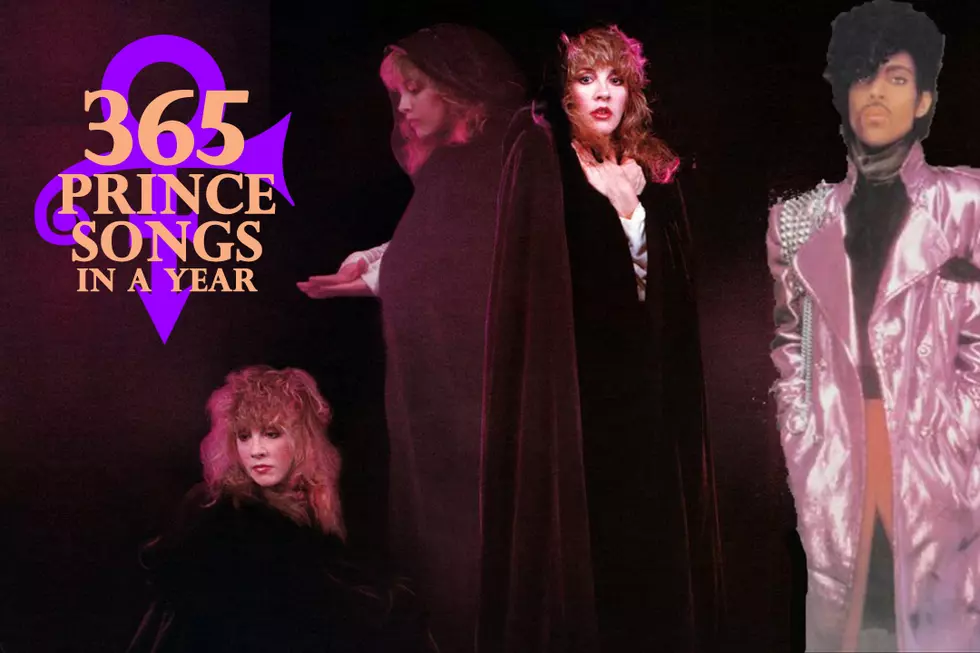
Prince Visits the ‘Warden in the Prison of Love': 365 Prince Songs in a Year
To celebrate the incredibly prolific, influential and diverse body of work left behind by Prince, we will be exploring a different song of his each day for an entire year with the series 365 Prince Songs in a Year.
By December 1988, Prince had developed an unparalleled track record for turning other acts, such as the Time and Sheila E., into bankable stars and giving monster hits to Sheena Easton and the Bangles. When Prince first heard the soulful voice of Margaret “Margie” Cox, he knew they could make beautiful music together.
For the past 33 years, Margie Cox has been a fixture on the Minneapolis music scene. She started off as the lead vocalist for a band called the Seen. After Time guitarist Jesse Johnson discovered her in 1985, he re-named her “Ta Mara” and the band became Ta Mara and the Seen. he then produced their debut album.
By 1987, Cox was gigging with Dr. Mambo’s Combo, the Sunday night house band at a North Loop bar called Bunker’s. “Back then, it was this almost-secret part of downtown where the streetlights grew faint, and the parking was free,” drummer Michael Bland, a member of the group, told the Star Tribune in 2017. “It was cool, but also very blue-collar.”
When Prince eventually caught wind of the band, he immediately saw two opportunities: potential stars he could lift into the heavens and fierce musicians he could poach in the wake of the Revolution’s implosion. “He stole half the band for his own band, so that tells you something,” guitarist Billy Franze told the Star Tribune in the same 2017 feature.
Franze founded the group with Cox and Tim “Dr. Mambo” Emerson. Mambo left the band in the mid-'90s but still sits in on occasion. Bland, guitarist Sonny Thompson and keyboardist Tommy Barbarella all got their start in Dr. Mambo’s Combo before joining the New Power Generation. Thompson still plays with the Combo today, as does Bland when he’s not touring with Soul Asylum.
In 2014, Bland recalled his impromptu 1989 audition to Cole Comma of City Pages. "The next Monday, here comes Prince in his limo and Levi (Seacer Jr.) and all these cats dressed up like they just walked off a stage walking into Bunker's. And I'm like 'What's going on?’ [Prince] got up to sit in that night. I just did what I was doing and tried not to engage him. Just kind of let him do what he wanted in the corner. Cody Anderson, the sound guy, said, 'Dude, he was watching your hands the whole time. You're gonna work for Prince!'"
According to PrinceVault, Prince approached Cox about recording an album, and members of the Mambo Combo were brought in to Paisley Park to contribute. As he did with many of the acts he worked with, he renamed them. At first they were "Flash," then they were "MC Flash." The MC stood for Margie Cox.
Prince wrote and recorded a variety of songs for the album, but few would ever see the light of day. Per his custom, Prince recorded most of the music and laid down guide vocals; Cox recorded her vocals in subsequent sessions. Sheila E. is believed to have contributed to four songs, and Bland to one. Franze sang lead on “Good Man."
Prince gave MC Flash some local opening slots to hype the band and generate label interest, but got no takers. Mavis Staples got the plum gig to open the Nude Tour and the Flash album faded away.
Prince would revisit a solo album with Cox in 1991, and she would eventually see the aptly titled “Standing at the Altar” released on the 1-800-NEW-FUNK compilation. The sole Flash track to be somewhat officially released was “Whistlin’ Kenny," as a b-side on a promotional 12-inch single for “Altar."
This long and winding origin story brings us back to the non-released Flash album track, “Warden in the Prison of Love." The song is the ultimate showcase for Cox’s amazing voice. The lyrics deliver another angle on the courthouse and prison metaphors for love Prince was fond of at the time, heard in “Witness 4 the Prosecution," “Big Tall Wall” and “Electric Chair,” which Cox sang with Prince on Saturday Night Live. “Warden” is also notable for the call-and-response between Cox's rafter-melting soulful voice and some of the biggest, arena-ready guitar licks Prince ever put on tape.
Flash, the band, is often confused for “The Flesh," an early incarnation of Prince’s soft jazz side project, Madhouse, whose “17” was paired as the official b-side to Cox’s “Standing at the Altar” CD single. Even though the Flash project disappeared quickly, 1988 wound up being a really good year for Cox. Under her Ta Mara pseudonym, she co-authored “I Need You” with Jesse Johnson, which wound up on Paula Abdul’s 7x-platinum 1988 album, Forever Your Girl. Ever since, she's been forever with Dr. Mambo's Combo, welcoming fans old and new down to Bunker's for a night of soul and funk classics.
Cox joins a long line of protégés -- from Carmen Electra and Anna Garcia to Andy Allo and Tamar -- that didn’t quite live up to the high bar set by Sheila E. But she forever had a place in his heart. Prince would check out Dr. Mambo’s Combo on occasion throughout his career. "He was here like four or five weeks ago,” Cox told City Pages in 2014. “He goes to his same little spot in the corner." A year after Prince’s death, Bland told the Star Tribune, “(Prince) liked coming down and watching the rest of us do our thing, but really I think he was mostly coming to hear Margaret. He had so much respect for her as a singer.”
More From Diffuser.fm









